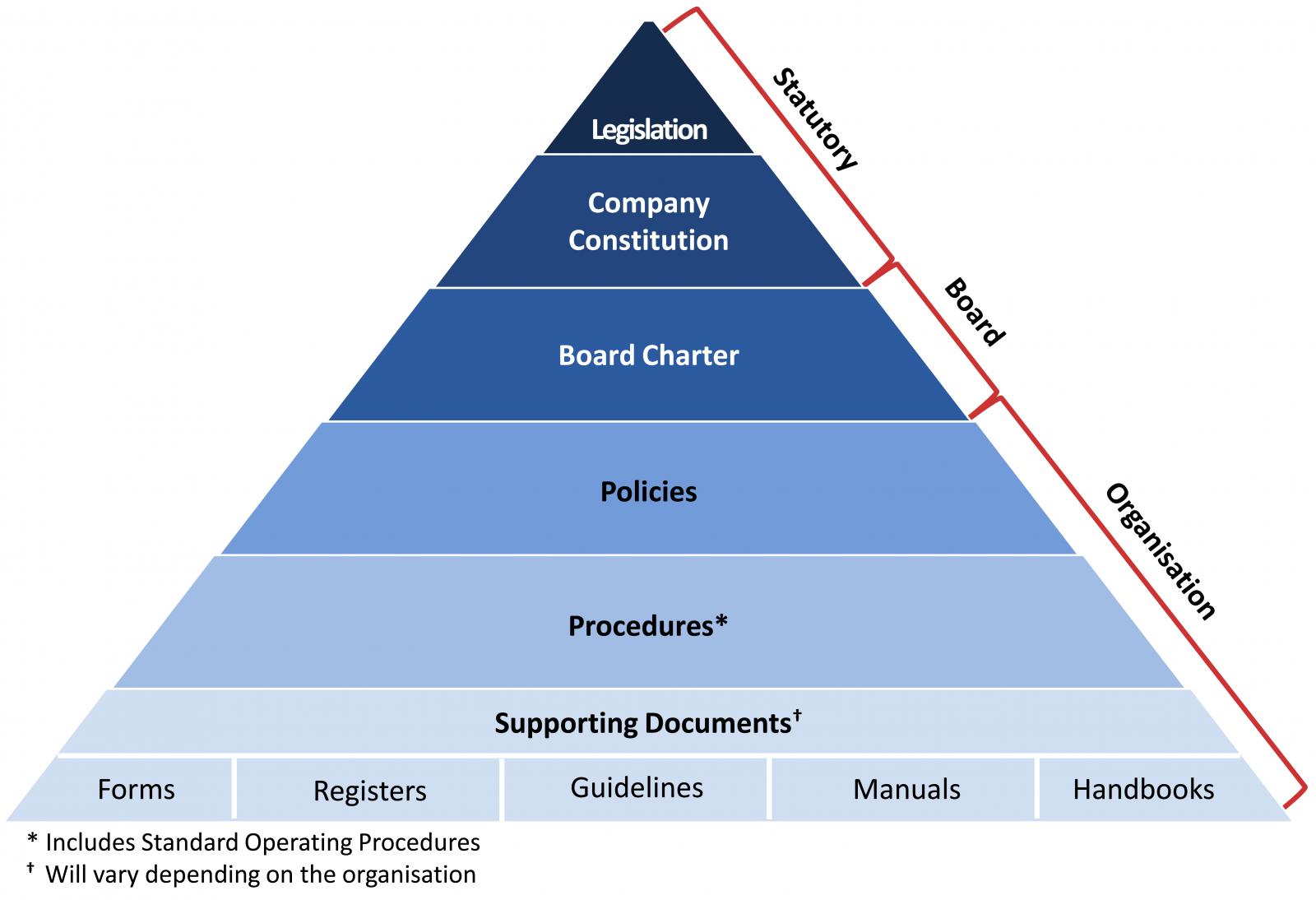Many organisations struggle with policy formation and review. They understand that written documentation is essential for effective and consistent communication within organisations, and the provision of clear, written policies and procedures that reflect current practice and community expectations assists in accountability.
Written policies and procedures provide tangible evidence of intended practices that are consistent with the organisation’s values, and should be regularly reviewed, evaluated and updated. Policy is also important to the efficient and effective operation of the organisation. It is a tool enabling:
- individuals to get on with their jobs without the need to discuss issues each time they arise;
- participants from different parts of the organisation to work towards a common goal;
- consistency and predictability throughout the organisation;
- compliance with legal and other requirements; and
- quality assurance and improvement.
To help you with your policy governance, we examine the key elements of a Policy framework below.
Key elements of a policy framework
The key elements for a policy on policies are:
- policy hierarchy – sets out the documentation that defines and governs the organisation’s activities, listed in order of precedence;
- policy and procedure development process – sets out the requirements for creating policies, procedures, etc., including process maps and document templates; and
- roles and responsibilities – information about who is involved in the process of developing policies and what they do as well as who has the authority to approve policies and procedures for publication and distribution.
1. Policy hierarchy
Any policy framework within an organisation will have a series of associated levels, each of which will have different objectives. Figure 1 illustrates the components of a policy framework, which itself is guided and regulated by the overall statutory framework within which the organisation operates. For example, an APRA-regulated financial institution will have different policy needs to those of an ACNC-regulated charity.
Figure 1: Policy hierarchy

Some organisations will differentiate between policies and procedures. Procedures generally reflect governance or operational standards, provide a specific guide to decision making, and explain how policies are put into effect. But sometimes the governing ‘policy’ and the ‘procedures’ are linked in a document, which will be described as a ‘policy’. For example, there may be the expectation that some policies, such as those related to conflicts of interest, will include the relevant procedures to be followed to manage a conflict or potential conflict when it arises.
There will generally be two categories of policies in an organisation:
- governance – policy with board level risk or strategic implications or with board level statutory or regulatory requirements (e.g. ASX, APRA), and relates to the processes of decision making and the controls and behaviours that support effective accountability and performance outcomes (e.g. risk management policy, code of conduct);
- operational – policy other than governance policy. These may be:
- an organisation-wide operational policy, which refers to practices across a range of activities (e.g. travel policy); or
- a specific operational policy, which refers to matters in respect of a specific activity and relevant to all staff (e.g. human resource policy).
Templates should be developed for each type of policy document the organisation uses to ensure they are presented consistently. Information should also be provided about how to use each template.
2. Policy and procedure development process
The policy framework policy should contain a trigger for a new policy and/or procedure. For example, this may include changes to the external operating environment, a review of the strategic direction of the organisation, or changes to government policy or legislation.
The development and revision of policy documents will generally comprise a process similar to the one set out below. This process should be fully explained in the procedure section of the policy or a separate procedure document depending on your organisation’s preference.
Policy development stages
- Needs analysis for the development of a new policy/procedure or a review
- Appointment of a policy author and policy approver
- Research and data gathering
- Draft document
- Circulation of draft document
- Consultation with stakeholders
- Circulation of redrafted document
- Policy approval
- Communication and implementation
- Maintenance and review
It is useful to establish a glossary or vocabulary of definitions to ensure consistency of term use in your policy documents. Policy documents with multiple words for a single concept, obscure acronyms or technical/professional jargon can cause a great deal of confusion to users, who may inadvertently breach a policy through a lack of understanding about what was meant. It is also a major reason so many employees find it difficult to read policy and procedures.
3. Roles and responsibilities
Setting out the roles and responsibilities is essential to an effective policy framework. This includes:
- the need for clear authority for the formulation of policy documents (i.e., delegations of authority);
- guidance concerning the responsibilities of policy owners and how policy is formulated, approved and disseminated;
- the selection of a policy system manager for the management of organisational policy documents and for setting standards as to the development, content and review of those documents.
A policy document must be approved by the highest delegated authority. For example, the board (for all new or any major amendments to existing governance policy documents or to firm-wide operational policies which have significant risk, compliance or cost implications) or the CEO or a delegated authority (for new or major amendments to existing operational policy documents which do not require board approval).
Do your policies need review?
Having reviewed the key elements of policy formation, you may be thinking your policies need review. Effective Governance has deep experience in policy formation and review. Contact us for a conversation.
